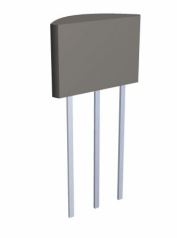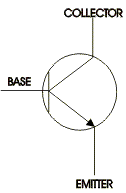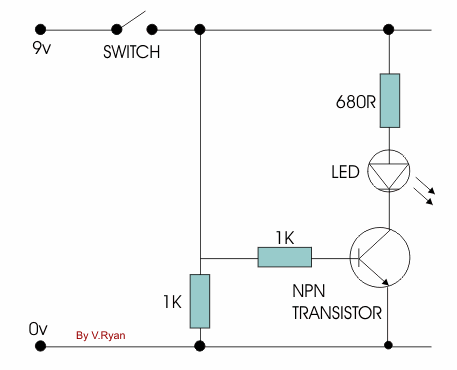http://www.infoplease.com/encyclopedia/science/transistor-types-transistors.html
TRANSISTORS
The Junction Transistor
http://www.technologystudent.com/elec1/transis1.htm
TRANSISTORS
TRANSISTORS
The transistor is an arrangement of semiconductor materials that share common physical boundaries. Materials most commonly used are silicon, gallium-arsenide, and germanium, into which impurities have been introduced by a process called "doping." In n -type semiconductors the impurities or dopants result in an excess of electrons, or negative charges; in p -type semiconductors the dopants lead to a deficiency of electrons and therefore an excess of positive charge carriers or "holes."
The n-p-n junction transistor consists of two n -type semiconductors (called the emitter and collector) separated by a thin layer of p -type semiconductor (called the base). The transistor action is such that if the electric potentials on the segments are properly determined, a small current between the base and emitter connections results in a large current between the emitter and collector connections, thus producing current amplification. Some circuits are designed to use the transistor as a switching device; current in the base-emitter junction creates a low-resistance path between the collector and emitter. The p-n-p junction transistor, consisting of a thin layer of n -type semiconductor lying between two p -type semiconductors, works in the same manner, except that all polarities are reversed.
http://www.technologystudent.com/elec1/transis1.htm
TRANSISTORS
Transistors can be regarded as a type of switch, as can many electronic components. They are used in a variety of circuits and you will find that it is rare that a circuit built in a school Technology Department does not contain at least one transistor. They are central to electronics and there are two main types; NPN and PNP. Most circuits tend to use NPN. There are hundreds of transistors which work at different voltages but all of them fall into these two categories.
| |||||||||||||||||||||||||||||||||||||||||||||||||||||||||||||||||||||||||
TWO EXAMPLES OF DIFFERENT SHAPES OF TRANSISTOR
| |||||||||||||||||||||||||||||||||||||||||||||||||||||||||||||||||||||||||
Transistors are manufactured in different shapes but they have three leads (legs).
The BASE - which is the lead responsible for activating the transistor. The COLLECTOR - which is the positive lead. The EMITTER - which is the negative lead. The diagram below shows the symbol of an NPN transistor. They are not always set out as shown in the diagrams to the left and right, although the ‘tab’ on the type shown to the left is usually next to the ‘emitter’. | |||||||||||||||||||||||||||||||||||||||||||||||||||||||||||||||||||||||||
The leads on a transistor may not always be in this arrangement. When buying a transistor, directions will normally state clearly which lead is the BASE, EMITTER or COLLECTOR.
|  | ||||||||||||||||||||||||||||||||||||||||||||||||||||||||||||||||||||||||
| |||||||||||||||||||||||||||||||||||||||||||||||||||||||||||||||||||||||||


No comments:
Post a Comment